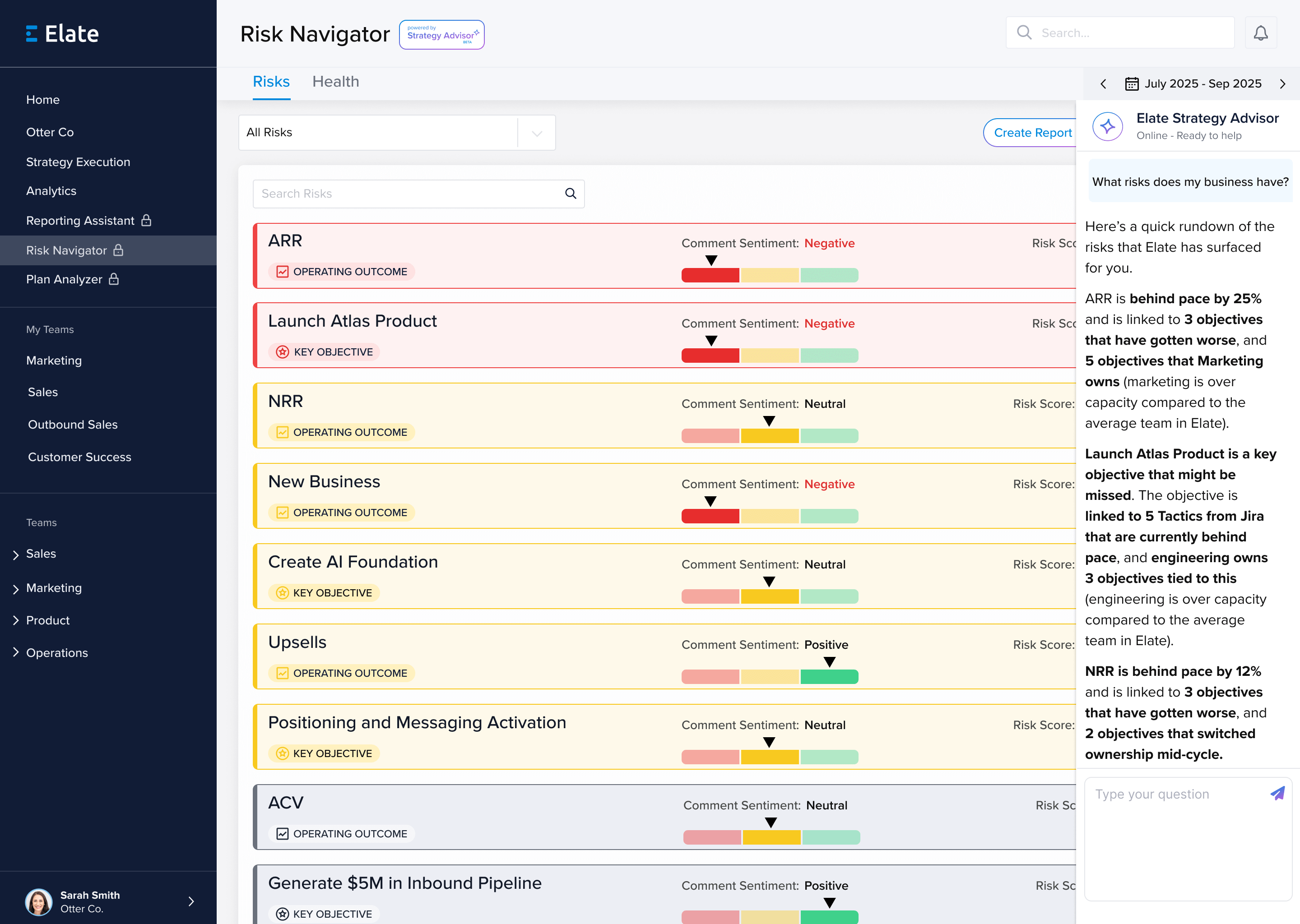What Is the Strategic Planning Process Model?
A strategic planning model is how a business turns goals and aspirations into an action plan. Leaders and founders are often looking for one single model that is guaranteed to unlock success. No one approach to strategic planning is right for all businesses. However, there is a strategic planning process model that can work for every business. Read on for some different types of the strategic planning process with examples to guide your thinking, and the elements that can’t be left out of any model.
What Are the 7 Elements of Strategic Planning?
Seven elements every strategic plan includes are the company vision, company mission, business and market analysis, core values, goals, objectives, and the action plan.
- Vision Statement: The overall dream for the company and a description of its ideal state.
- Mission Statement: A summary of what the company does currently, how the work is done, and who the customers are.
- Analysis: Internal and external data needed for the plan including insights about operations, financials, resources, and the current or target market(s).
- Core Values: Beliefs and behaviors that currently advance your mission, as well as preserve the integrity of the vision.
- Goals: These exist one level below the vision, speaking to the gaps between where the business is today and where it wants to be in the future.
- Objectives: Each goal should then be connected to one or more objectives. Objectives should be specific, measurable, achievable, realistic, and time-based (SMART).
- Action Plans: By the time SMART objectives are established, the action plans to pursue them should naturally follow. Remember that the more detailed and structured your action plans, the less flexibility might be available to those who need to execute on them.
Now that you know what is generally included in a strategic plan, let’s get to the different strategic planning model examples.
Types of Strategic Planning Models
Strategic planning models can be categorized in three types: metrics-based, goals-based, and issues-based.
Companies may use just one basic strategic planning model or combine several to meet their needs.
- Metrics-Based Strategic Planning: This approach is rooted in current metrics and the desire to see them change. The model will guide the business to define actionable steps to achieve these improvements and communicate with employees. One example of metrics-based strategic planning is The Balanced Scorecard (BSC) approach. Metrics from customer experience, internal processes, the overall organization, and financials are examined. These provide a balanced perspective to set the portfolio of initiatives and define how success will be measured.
- Goals-Based Strategic Planning: This approach is rooted in the specific high-level objectives of the business and the timeline to achieve them. The model will guide the business to think through the actions necessary to reach the finish line and help allocate responsibilities accordingly. One example of goals-based strategic planning is Objectives and Key Results (OKRs). This is a collaborative planning process where the overall goal is tied to three results that will manifest when the goal is achieved. Chasing those outcomes provides intrinsic value to employees and helps everyone be aware of how the needle is moving in the right direction.
- Situation-Based Strategic Planning: This approach is rooted in a specific need or issue that is distinct from the overall business goals. This could be an expansion into a new market opportunity, or the challenge to address a risk or threat that has emerged. The model will help company leaders take full scope of the situation and act (or react) in the right ways. One example of an issues-based strategic planning tool is a SWOT Analysis. SWOT stands for strengths, weaknesses, opportunities, and threats. Completing this matrix helps a company understand its position relative to the current issue, what choices they have moving forward, and barriers they need to address.
It is worth reiterating that none of these approaches exist in a vacuum. Without metrics, you can’t measure progress toward a goal. And without a goal for improvement, why continue tracking data? If you aren’t addressing one or more issues, there would be no need for a plan to begin with. Elate was created to exist at the center of these converging needs, making it easier than ever for companies to create, implement, and celebrate the success of their strategic plans.
Trust Elate With Your Strategic Planning Process
Elate partners with strategic and operational leaders to not only create world-class strategic plans, but also support companies through the execution of their efforts. Our strategic planning solution helps team members at all levels focus on their objectives without losing sight of the overall vision. Secure integrations with tools like Slack, Microsoft Teams, HubSpot, the Google Suite, and more help the new strategic vision become a natural part of the workflow. And, if you are looking for a second set of eyes on your plan, we also offer strategic planning consulting to help you establish internal alignment and clear communication. As you set out on your exciting growth journey, Elate is here to help every step of the way. Request a demo today!











